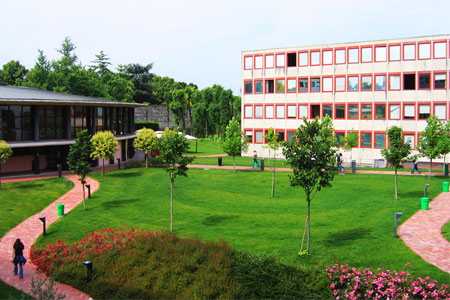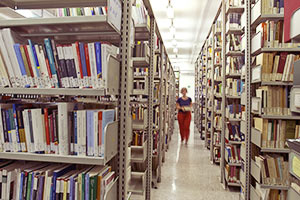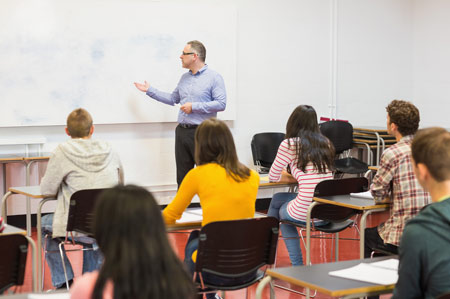Learning outcomes
The course aims to provide a good knowledge of Spanish literature from its origins to the seventeenth century (historical context, texts, genres, movements and authors). At the end of the course the student will have to demonstrate to understand complex texts and implicit meanings and will have to express himself in Spanish fluently and spontaneously; he/shemust be able to contextualize literary phenomena, to argue about the teaching contents in written and oral form in Italian and in Spanish.
TITLE OF THE COURSE: The literary culture of the Siglo de Oro
The course is an introduction to the Spanish culture and literature of the Renaissance and the Baroque period. In particular, the following authors and literary currents will be presented:
1 Pre-Renaissance: the historical and social context of the fifteenth century, the Catholic Kings, the lyric of the Castilian tradition, the romancero, the novel, Celestina.
2 Renaissance: the empire of Charles V, erasmism, Philip II and the Counter-Reformation, Italianist poetry and Garcilaso de la Vega, mysticism and Juan de la Cruz, the novel, the picaresque and the Lazarillo de Tormes.
3 Baroque: the kingdoms of Philip III and Philip IV; the theater: Lope de Vega, Tirso de Molina, Calderon de la Barca; the poem: Góngora and Quevedo.
The general context of literary history will be illustrated by the reading and commentary of three fundamental classics: the Lazarillo de Tormes, the Don Quijote by Miguel de Cervantes, the comedy La dama boba by Lope de Vega. Finally, the theme of the current shift to digital culture will be introduced in Spanish.
The exam is subject to passing (propedeuticità) of Spanish Language 1 and Spanish Literature 1. The teaching is given in Spanish and the classics will be read and partially commented in the classroom.
MANDATORY TEXTS
- MANUAL: F. Pedraza Jiménez, M. Rodríguez Cáceres, Las épocas de la literatura española, Ariel, 2012 (cap. 2, 3, 4)
-HISTORY: J.P. Fusi, Historia mínima de España, Madrid, Turner, 2012 (fino a p. 139)
- ANTHOLOGY: si vedano pagine in e-learning
- CLASSICS:
- Lazarillo de Tormes, ed. Francisco Rico, Venezia, Marsilio (integrale)
- F. Lope de Vega, La dama sciocca, Venezia, Marsilio (integrale)
- M. de Cervantes, Don Quijote de la Mancha, ed. Francisco Rico, Madrid, Alfaguara, 2016 (cap. indicati in e learning)
- D. Pennac, Come un romanzo, Feltrinelli (per introdurre il Don Quijote)
DIGITAL HUMANITIES
- J. M. Lucía Megías, Elogio del texto digital: claves para interpretar el nuevo paradigma Madrid 2012.
RECOMMENDED TEXTS ON DON CHISCIOTTE
- (optional): Anthony Close, Guía esencial del Quijote, Madrid, Visor, 2019
- Electronic edition with useful comments and notes: Miguel de Cervantes, El ingenioso Hidalgo Don Quijote de la Mancha, ed. F. Rico. Madrid: Cervantes Virtual Center, 1997. http://cvc.cervantes.es/literatura/clasicos/quijote
-Italian translation: Cervantes, Don Quixote of the Mancha, introduction. de Alessandra Riccio, care and trad. by Barbara Troiano and Giorgio di Dio, Rome Newton Compton, € 3.90.
During the course, ATTENDING students will have access to an intermediate written test on the first part of the course (history, literature history, anthology) that will contribute to the final evaluation.
The final exam on the second part of the program (reading of the 3 classics and of the book on digital culture) consists of an oral exam in Spanish which includes a verification of the level of comprehension of the texts (reading, translation and commentary).
Both the partial test and the final oral exam will be intended to verify:
- the depth and breadth of the knowledge acquired
- the ability to understand the literary texts in the program
- the ability to connect to the historical-cultural context
- the ability to express oneself and to argue in Spanish
Students NOT ATTENDING, in addition to the program and the bibliography indicated, must study Anthony Close, Guía esencial del Quijote, Madrid, Visor, 2019.
For non-attending students and attending students who have not taken (or have not passed) the partial exam, the final oral exam is scheduled for the entire course program.
Please note that 1 credit is equivalent to 25 hours of study; for this reason, in a course of 9 credits, in addition to attending the lessons (54 hours), students are expected to spend at least another 150 hours in schoolwork.
The teacher is available during the reception for clarifications on the course contents.







